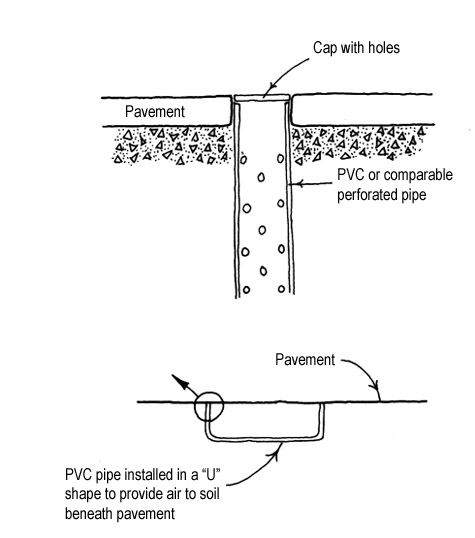Home > Urban/suburban design > Parking lot design solutions > Creating roots space under pavement
Creating root space under pavement
Some sandy or gravelly soils beneath pavement have enough gas exchange though crack in the pavement to allow root growth of a variety of trees. Other soils can only be colonized by roots of trees, such as honeylocust and baldcypress, capable of growing beneath pavement when oxygen suplly is limited.
Conditions suitable for root growth of a variety of trees can be created by providing air to the soil beneath pavement. This is easier said than done, though several methods might be tried. For an existing site, vertival holes can be drilled into pavement and soil cores removed to make room for a perforated pipe (see below).
A cap that allows air and water movement into the pipe is placed over the hole to keep large debris and feet out. This is intended to enhance aeration, although research shows that is increases aeration only in a very limited zone of several inches around the pipe.

Above image: A perforated pipe can be installed vertically to help air exchange beneath pavement. It should be connected to a hortizontal pipe and to another vertical pipe nearby to form a U for best aeration. The U shape is essential for supllying good airflow to the subsoil. Vertical pipes alone are much less effective. Pipes should be no larger than 3 inches in diameter with no less than 6 percent perforation.
The most innovation is possible when a parking lot is designed. The objective is to provide for root and air channels without compromising the strength of the soil supporting pavement or sidewalks.

